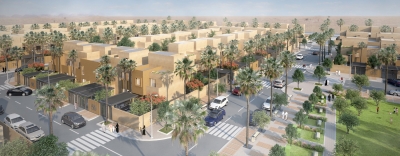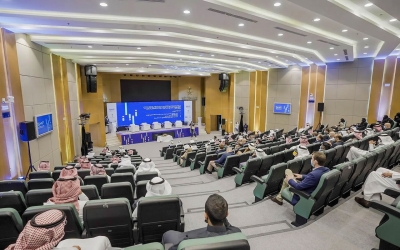
Riyadh Downtown Development Program is a program that aims to transform the downtown area of Riyadh into a national historical, administrative, economic, and cultural center. The program was launched during the second meeting of the Royal Commission for Riyadh City in 2013.
Importance of Downtown Riyadh
Downtown Riyadh serves as the political and administrative center of the capital, housing al-Hukm Palace, various government headquarters, and national cultural and heritage institutions. This area plays a significant economic role in the city due to its commercial vibrancy and preservation of traditional and specialized activities.
Objectives of Riyadh Downtown Development Plan
The Riyadh Downtown Development Plan aims to transform the area into a national historical, administrative, economic, and cultural center. This transformation is based on a study and analysis of the current conditions and the establishment of a future vision for the area's development. The plan includes an executive program involving both public and private sectors, as well as property owners from the community.
This plan acts as the main guide for the future development of the province, addressing current conditions and utilizing available opportunities to create an attractive environment for residence, work, and investment while preserving the province's heritage and historical buildings.
The plan has many objectives, including: conserving urban and cultural heritage, maintaining existing commercial activities, increasing employment opportunities, diversifying housing patterns, achieving social and demographic balance, expanding open spaces, enhancing urban security, and improving the province's road network and public utilities.
Riyadh Downtown area is defined by the plan as the area bounded by al-Washm Street connecting to Omar Bin al-Khattab Road to the north, al-Kharj Road to the east, Ammar Bin Yasir Street connecting to al-A’sha Street to the south, and Imam Abdulaziz Bin Mohammed Street to the west, covering an area of approximately fifteen km².
Development of residential neighborhoods in Downtown Riyadh
A feature of the Riyadh Downtown Development Plan is the development of housing in several downtown neighborhoods, with the aim of redeveloping residential areas with varying densities and housing units. This initiative aims to increase the number of citizens in the area, enhance urban security, and improve the quality of life. The Royal Commission for Riyadh City, in coordination with the Ministry of Municipalities and Housing, is working to develop housing projects in downtown Riyadh within the designated sites outlined in the plan.
Development of the transport system in Downtown Riyadh
Regarding transportation, a plan has been devised to develop the transport system in downtown Riyadh area. This includes rehabilitating the roads surrounding the area to form a ring road, creating new internal roads, upgrading intersections, improving pedestrian environments, and designating parking spaces throughout the area.
The public transport project (metro and buses) extends into downtown, with three main metro lines: Al-Olaya-al-Batha Line, al-Madinah Al-Munawwarah Road Line, and King Abdulaziz Road Line. Additionally, the bus network routes will serve the area, and a major train station will be established at the intersection of al-Madinah al-Munawwarah Road and King Faisal Street.
Development of open areas and parks in Downtown Riyadh
The Riyadh Downtown Development Plan focuses on increasing the proportion of open areas and parks in the region by providing public squares and open spaces connected to public transport stations via safe pedestrian walkways. Additional open spaces will be added to the area south of King Abdulaziz Historical Centre, extending to al-Hukm Palace area along a cultural and heritage route, which is a main component of the execution plan. The plan also includes the eastward expansion of Salam Park, the establishment of public and local gardens to serve the area and the city in general, and the intensification of tree planting along the main roads and streets in the area to enhance pedestrian movement.
In the cultural and heritage aspect, the plan designates the area within the old Riyadh walls as a 'special control area.' It aims to restore the memory of old Riyadh by preserving heritage buildings through "al-Zuhairah and al-Daho" development projects. A new cultural and heritage tourist route will be established, extending from King Abdulaziz Historical Centre in the north to the planned "Heritage Village" in al-Shumaisi Neighborhood in the south. This route will pass through the heritage, cultural, and entertainment landmarks in al-Zuhairah, al-Daho, al-Hukm Palace area, and Salam Park.
Increasing government use in Downtown Riyadh
Regarding government services, the Riyadh Downtown Development Plan emphasizes the area’s primary role as the administrative center of the city. This role will be enhanced by increasing government usage in the area south of al-Hukm Palace, which will include headquarters for government institutions such as administrative entities and courts. The scope of government use in the area will be expanded to include the establishment of media institutions near the 'Ministry of Culture and Media Complex', incorporating the headquarters of Saudi Broadcasting Authority. Additionally, educational and cultural institutions will be established to the north and west of the King Abdulaziz Historical Center. This will contribute to increasing employment opportunities for citizens in the area, thus supporting the goal of attracting them to work and reside there.
Enhancing and improving commercial activities in Downtown Riyadh
Riyadh's Downtown Development Plan also aims to enhance commercial activities in the area. The plan supports mixed-use areas along the main streets, with a focus on intensifying mixed-use development around train stations to maximize the benefits of public transport. A new "main axis for business and tourism" will be created as a mixed-use and entertainment corridor between al-Batha Road and King Faisal Street. This corridor will feature diverse uses, increased building heights and densities, and a new area for tourist services and hotels in the downtown.
The plan preserves commercial activity in al-Batha area, improving public spaces, walkways, and services. It identifies suitable types of activities to remain there and those types that should be relocated to other parts of the area or city, while maintaining locations of city-wide commercial activities, including those along al-Suilam Street and al-Atayef Street.
Executive program for Developing Downtown Riyadh
Riyadh Downtown Development Plan includes an executive program that emphasizes the necessity of a direct government role to drive development and initiate changes in the area, especially during the early stages of development. This will be achieved through a set of parallel executive mechanisms, including the implementation of government projects and initiatives such as the development of public transport lines, opening roads, creating open spaces, and other ones. Additionally, a 'Government Development Company' will be established, responsible for managing and developing the area. This company will prioritize development, prepare detailed plans, and form a high-level committee to oversee and follow up on the plan's implementation. The plan will also implement city-wide measures to facilitate development and address issues in the area, such as providing alternative locations for warehouses and workers’ housing, and developing solutions for road networks and traffic management to improve accessibility to the area. The plan outlines investment packages to be executed by private sector institutions, involving real estate owners and small developers by encouraging individual development initiatives.
This plan serves as a 'joint action plan' for stakeholders involved in the area's development, providing a reference for implementing their plans according to the priorities and timelines specified in this plan. The plan contributes to shaping a new future for the area, restoring its natural status as the vibrant heart of the capital, and creating an attractive residential, economic, and tourist environment.
Related quizzes
Related articles

